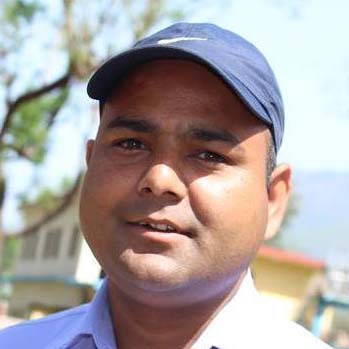Culture & Lifestyle
Historical chautaris and walking trails face extinction
The fig trees and foot trails, classic symbols of the village landscape, are disappearing as artificial parks become commonplace.
Krishna Prasad Gautam
Over a decade ago, Pipalneta at Musikot Municipality, Ward 3, was the primary gateway to West Rukum’s headquarters Khalanga. As the name suggests, it housed the large Pipal bot–the sacred fig tree. “The porters who transported goods coming from Macchmi, Chibang, Ratamata, and other places used to forget their momentary bodily aching when they rested on the chautari (rest stops),” says Tikaram Khatri, the 79-years-old local of Musikot.
“The cool breeze across the chautari used to cool the sweat-drenched bodies.” People who frequented Musikot market shielded themselves from the rain by standing under the shade of the Pipal tree, which was everyone’s saviour on hot days.
The Pipal tree became a space for conversations with friends about the highs and lows of life. Information about villages nearby was duly exchanged. “At one point in time, communication was handled underneath the chautari,” he says. According to him, Ward 3 got its name ‘Pipalneta’ because of the six sacred fig trees. But neither the chautari nor the Pipal trees are there now. According to Khatri, ever since the one-hundred-year-old tree in the middle of Pipalneta market was demolished, the beauty of the place has died with it. “None of the six trees remain.”
All the political programs happening in the capital of Karnali Province, Birendranagar, are done at Pipalchautara, Ward 6. Pipal tree chautari was used for the general meeting of various parties during the election of the local level, regional level, and representative level. However, no concern about its protection has been shown, says a local leader, Purnajang Sharma. 81-year-old Sharma goes daily to the Pipalchautara and spends two hours there, exchanging memories with his counterparts. Even now, almost dozens of people like him arrive at Pipalchuatara to drink tea and exchange political viewpoints. “Our memories are aligned with such rest houses. These are our assets because health, the beauty of the place, and history come together with it,” he says.
“The local government has spent millions to construct parks but hasn’t paid attention to the conservation of Chautara,” he laments. He reckons the central tree may have been planted somewhere around 1970. For him, in comparison to various parks being constructed today, chautaris are far superior in preserving the charm of the city.
The grim reality is that even in Karnali villages, Pipal trees are becoming a rarity. In the name of constructing and developing roads, public buildings, electricity, and other similar infrastructures, they face obsoletion. A local, Lok Jang Shahi, says that Pipal trees are a symbol of religious faith and are vital both for natural and scientific reasons. “These trees purify our place, but many are growing old. We need to plant new trees.”
Vice-principal of Agriculture and Forestry University, Chiranjibi Sharma, says trees like Bar and Pipal carry huge importance from a scientific viewpoint. “These two trees play a major role in supplying oxygen,’ he said, “Pipal is the only such tree that transmits oxygen for twenty-four hours.”
Bhaktabahadur KC, an ayurvedic practitioner, says that the juice of Pipal trees can produce medicines for nearly eighty illnesses. “Medicines can be made from the roots, rind, and leaves,” he says.
According to 79-year-old Nandaram Thani, the local governments are prioritising building parks, and that is one of the main reasons why chautaris are in danger. “The local government, in the name of modernity, has spent tens of millions to build parks and have overlooked the conservation of chautaris,” he said.
Birendranagar municipality has spent Rs70 million to build parks in the span of five years. Even this year, the budget has been allocated for 12 parks. “30 million rupees from the province, municipality, and other organisations have been collected to construct parks,” says municipality chief Narhari Tiwari. He also claims to have allocated the budget for the conservation of chautaris. Musikot Municipality of West Rukum has spent 10 million on Mukikot Palace Park. But the tourists rarely frequent there.
Even walking trails have started disappearing. “People have stopped walking,” says Dhirbahadur Shahi, the principal of Karnali secondary school. “Previously, the road would be occupied by four to five hundred people, but now it’s empty.” The vehicle never arrives on time at the Karnali corridor, yet the people wait three to four hours instead of walking.
Since the road reached Durdaraj, the traditional pathway has begun to disappear, says 93-year-old Sattasingh Buda. He believes that the road has made people idle. “The system has changed, and new developments caused the extinction of old infrastructures,” he laments. Many decades ago, he used to walk through trodden trails to reach the Indian market of Rupaidia through Nepalgunj to transport salt and rice for fifteen days.




 19.12°C Kathmandu
19.12°C Kathmandu















